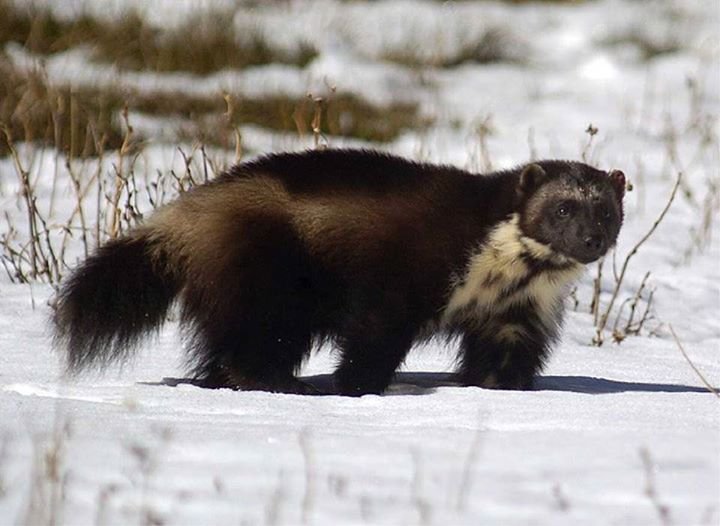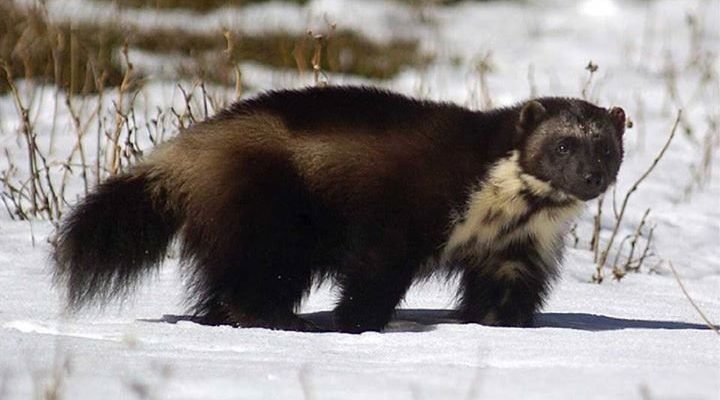
Wolverines are part of the weasel family and are surprisingly resilient. They roam the cold, remote wilderness of the Arctic and subarctic regions, showing us just how tough they can be. Think of them as nature’s little survival experts. They’ve developed some amazing traits that help them not just survive but thrive in their icy homes. Here’s the thing: understanding wolverines can shed light on broader themes of adaptation and survival in wildlife.
Physical Adaptations for Survival
Wolverines are equipped with several **physical adaptations** that allow them to withstand extreme environments. First off, they have a thick, water-repellent coat that keeps them warm and dry. This fur isn’t just for show; it acts like a thermal blanket. Wolverines can withstand temperatures well below freezing.
Another interesting feature is their broad, large paws. These aren’t just for walking; they act like snowshoes, helping to distribute their weight over soft snow. Have you ever tried walking in deep snow? It’s tough! But with their specially designed paws, wolverines can move swiftly and efficiently, even when they’re searching for food.
Additionally, their powerful claws enable them to dig through snow and ice to find hidden food sources. They can even uncover carcasses buried under deep snow. It’s like having built-in tools for survival. These adaptations show just how well wolverines are suited to their harsh habitats.
Diet and Hunting Strategies
Wolverines are **opportunistic eaters**—this means they’ll eat whatever they can find. Their diet primarily consists of small mammals, birds, and carrion (animal carcasses). Being scavengers is an important survival strategy, especially during tough winters when fresh food is hard to come by.
When hunting, wolverines use a clever mix of stealth and strength. They’re not the fastest animals out there, but they are incredibly persistent. They stalk their prey quietly, using the snow cover to their advantage. You might wonder how they manage to catch animals that are often quicker than they are. Here’s the thing: wolverines are tenacious. If they identify a source of food, they’ll often wait patiently, biding their time until the perfect moment to strike.
Wolverines also have a unique ability to cache food, meaning they store it for later. They bury their finds under snow or hide them in trees. This helps them survive when food is scarce, ensuring they have something to eat when times get tough. It’s like preparing for winter long before snow starts falling!
Behavioral Adaptations
Beyond their physical traits, wolverines have **remarkably adaptive behaviors** that enhance their survival odds. They’re mostly solitary creatures, which means they don’t rely on others to find food. This independence allows them to explore vast areas in search of resources. Think of it as being a rugged individualist in the wild.
Wolverines also have a keen sense of smell, which helps them locate food that is miles away. It’s impressive how they can sniff out carrion buried under thick snow. Their excellent sense of smell is a vital tool, especially when they need to find food in a world where resources can be limited.
Another interesting behavior is their territorial nature. Wolverines mark their territory with scent markings, warning others to stay away. This not only protects their food sources but also reduces competition. By keeping others at bay, they increase their chances of survival in those challenging environments.
Habitat and Range
Wolverines prefer **remote, snowy environments** like boreal forests, tundras, and mountains. They thrive in areas that are often inhospitable to other animals. The cold climate isn’t a deterrent for them; instead, it’s home sweet home.
In North America, wolverines can be found in parts of Canada and Alaska, as well as some northern regions of the continental United States. Their habitat is often characterized by rugged landscapes, which provide the perfect backdrop for their lifestyle. Imagine vast, snowy mountains where they can roam freely and find food.
However, their habitat is increasingly threatened by climate change and human activities. Melting snowpack and warmer winters disrupt their hunting and breeding behaviors. Advocating for the protection of their habitats is essential for ensuring wolverines can continue to survive in these particularly challenging environments.
Reproduction and Parenting
When it comes to **reproduction**, wolverines have a unique approach. They mate in late summer, but female wolverines don’t give birth until the spring. This delayed implantation allows the young to be born when food is more plentiful. What a clever strategy!
After a gestation period of about 30-35 days, typically two to four kits are born in a den dug into the snow or a sheltered rocky area. The mother takes on the primary role in caring for them. Unlike many other animals, wolverine kits are born blind and helpless, relying entirely on their mother for survival.
As they grow, the mother teaches them essential survival skills. They learn how to hunt and find food, and eventually, the kits will venture out on their own. This nurturing period is critical for survival, as it prepares them for the harsh realities of life in the wild.
Conservation Status and Challenges
Unfortunately, wolverines face significant **conservation challenges**. Their populations are declining due to habitat loss, climate change, and human interference. As warming temperatures affect their cold habitats, wolverines may struggle to find suitable areas to live.
Conservation efforts are underway to protect these remarkable creatures. This includes habitat preservation and management strategies that aim to maintain the unique environments they call home. Protecting wolverines isn’t just about saving one species; it’s about preserving an entire ecosystem that relies on balance.
You might be wondering what you can do. Supporting wildlife conservation organizations or spreading awareness can make a difference. Every little bit helps when it comes to preserving the incredible diversity of our planet, including tough survivors like the wolverine.
Wolverines are incredible examples of resilience and adaptation in the animal kingdom. From their physical adaptations that keep them warm to their clever hunting strategies and unique reproductive practices, these creatures show us just how fascinating life can be in the harshest environments.
As we work toward understanding and protecting them, we also learn valuable lessons about survival, adaptation, and the interconnectedness of all living things. It’s a tough world out there, but if anyone knows how to thrive in it, it’s the mighty wolverine. They remind us that even in the harshest conditions, life finds a way to not just survive but to flourish. So, let’s celebrate these remarkable creatures and do our part to ensure they continue to thrive in their icy realms.

